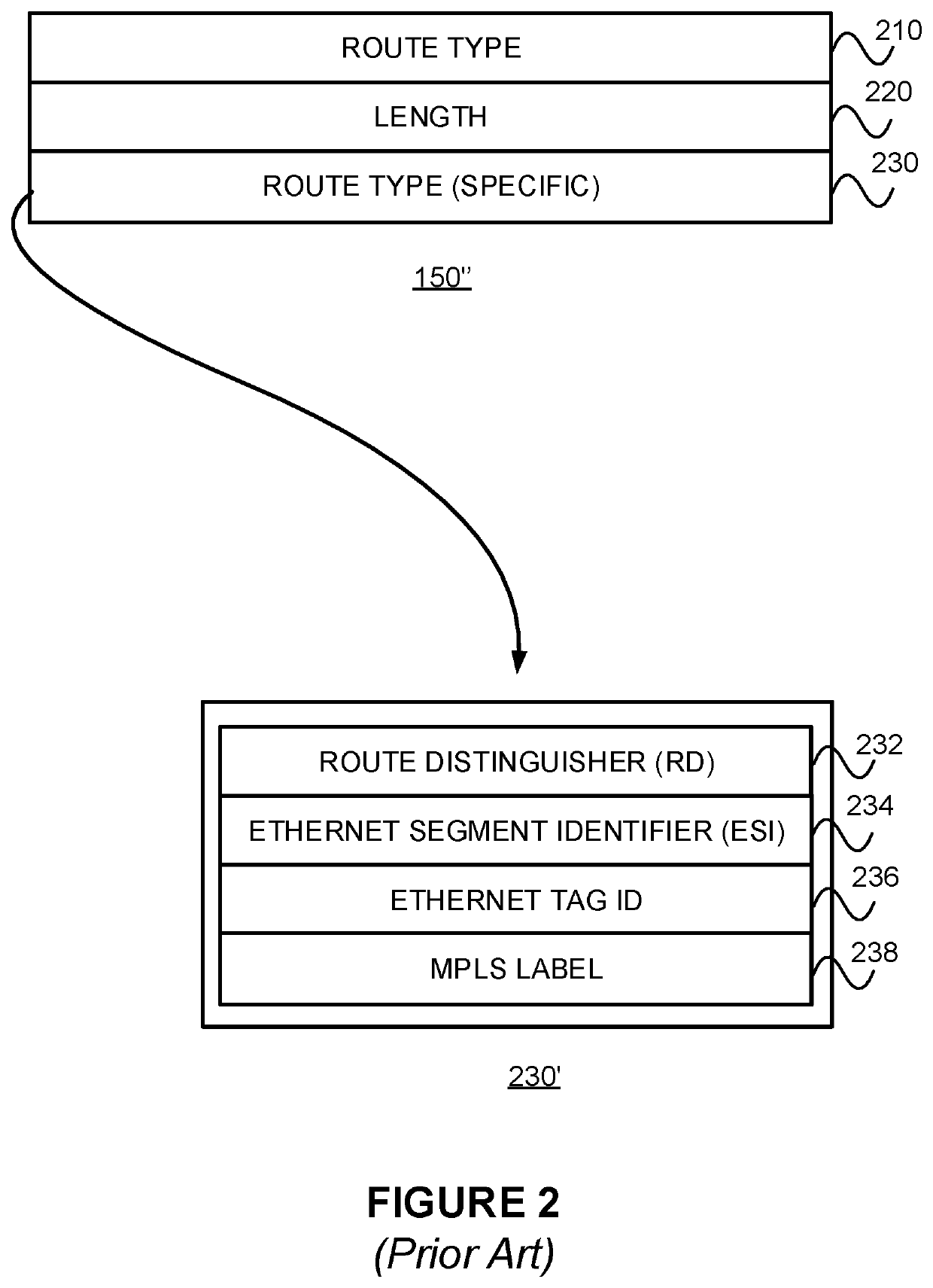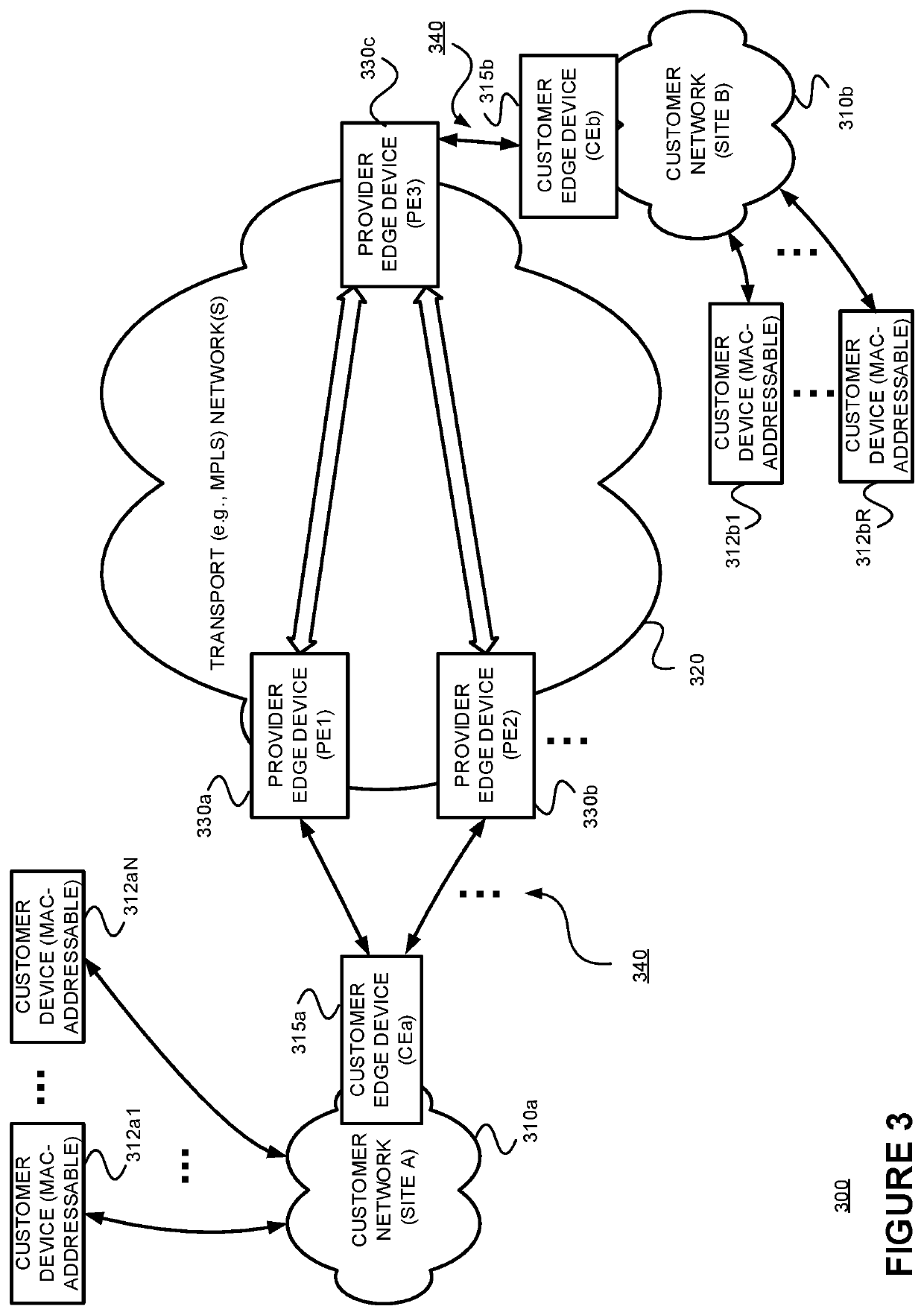Aliasing behavior for traffic to multihomed sites in ethernet virtual private network (EVPN) networks
a virtual private network and traffic aliasing technology, applied in the field of communication networks, can solve the problems of vpls having some limitations, relative large number of sites not having “fully meshed” network topologies, and relatively high cost of dedicated wans
- Summary
- Abstract
- Description
- Claims
- Application Information
AI Technical Summary
Benefits of technology
Problems solved by technology
Method used
Image
Examples
Embodiment Construction
[0090]The present disclosure may involve novel methods, apparatus, message formats, and / or data structures for controlling advertisements of an auto-discovery per EVPN instance (A-D / EVI) route (or an auto-discovery per Ethernet segment identifier (A-D / ESI) route) to a remote provider edge device (PE3), belonging to the EVPN but not directly connected with the CE, in a way that reduces the probability of one of the at least two provider edge devices (PE2) dropping or flooding packets designed for a MAC addressable device of the multihomed site. The following description is presented to enable one skilled in the art to make and use the described embodiments, and is provided in the context of particular applications and their requirements. Thus, the following description of example embodiments provides illustration and description, but is not intended to be exhaustive or to limit the present disclosure to the precise form disclosed. Various modifications to the disclosed embodiments wi...
PUM
 Login to view more
Login to view more Abstract
Description
Claims
Application Information
 Login to view more
Login to view more - R&D Engineer
- R&D Manager
- IP Professional
- Industry Leading Data Capabilities
- Powerful AI technology
- Patent DNA Extraction
Browse by: Latest US Patents, China's latest patents, Technical Efficacy Thesaurus, Application Domain, Technology Topic.
© 2024 PatSnap. All rights reserved.Legal|Privacy policy|Modern Slavery Act Transparency Statement|Sitemap



